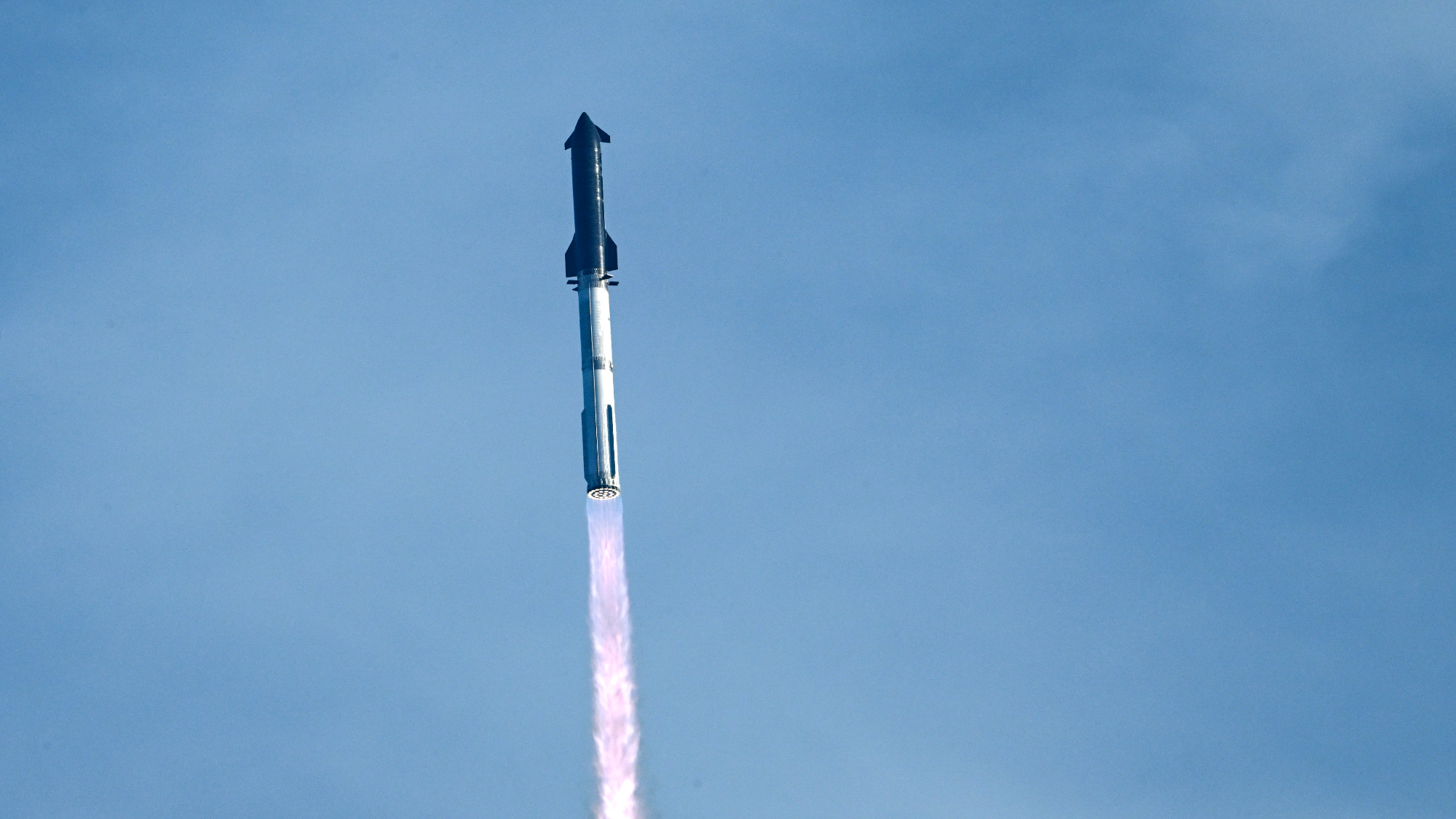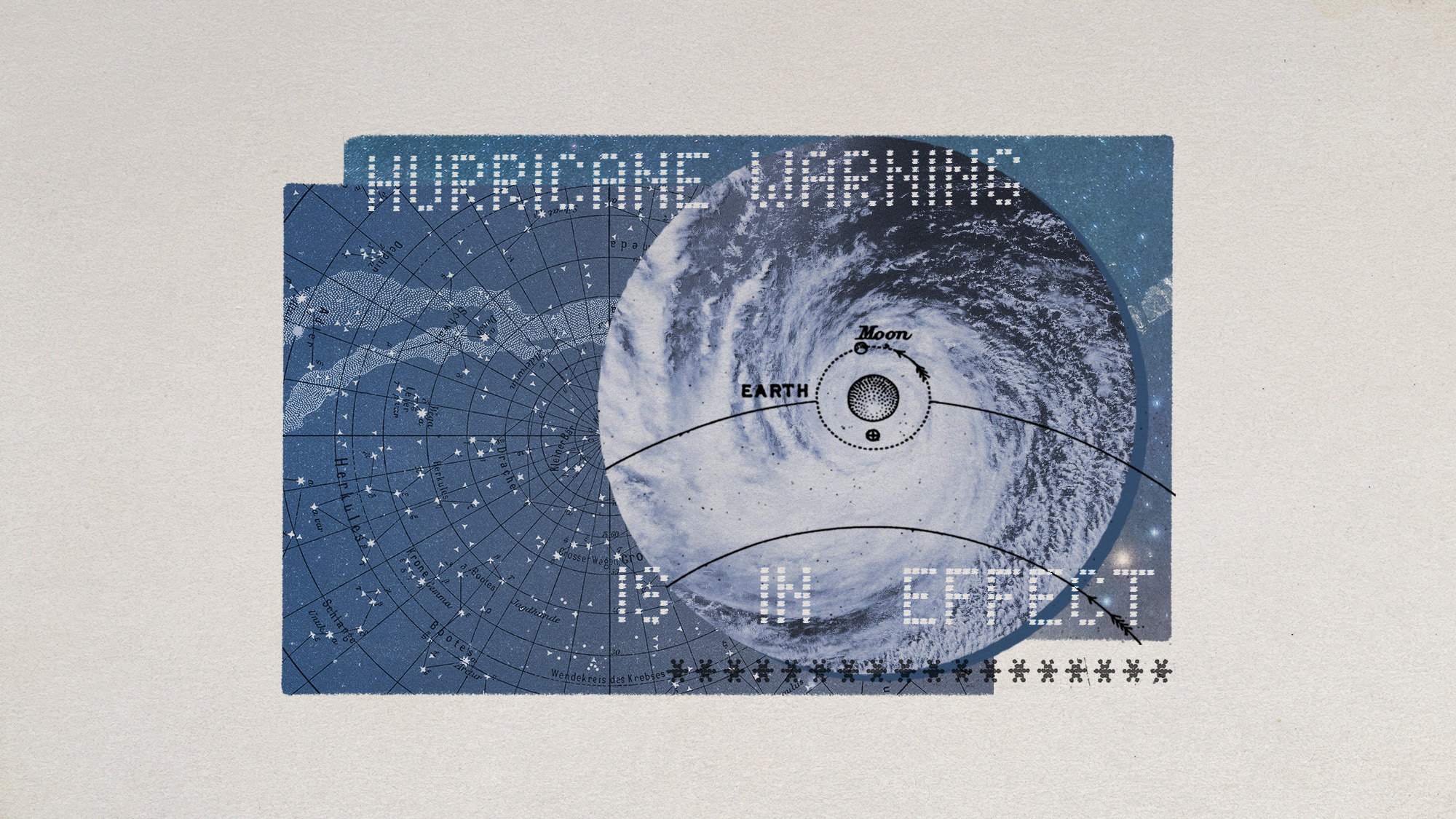Why SpaceX is genuinely cheering the Starship test flight's explosive 'rapid unscheduled disassembly'

SpaceX's 394-foot-tall Starship, the biggest and most powerful rocket ever built, lifted off Thursday morning from the company's Starbase launch site in south Texas, propelled skyward by the 33 Raptor rockets on its massive Super Heavy first-stage booster. The uncrewed rocket, making its first test flight, rose 24 miles into the air before beginning to tumble, then, about four minutes after liftoff, it exploded. Back at SpaceX headquarters in California, employees cheered. One sprayed a bottle of champagne on colleagues.
"To get this far is amazing," SpaceX's Kate Tice said on the livestream. "Everything after clearing the tower was icing on the cake." SpaceX tweeted, dryly: "As if the flight test was not exciting enough, Starship experienced a rapid unscheduled disassembly before stage separation."

Starship's test flight was supposed to take it in a partial orbit of the earth before crashing into the Pacific Ocean near Hawaii about 90 minutes after liftoff. The company explained that after the Starship rocket failed to separate from the Super Heavy booster and started to lose altitude, SpaceX or its computers hit the self-destruct button.
The Week
Escape your echo chamber. Get the facts behind the news, plus analysis from multiple perspectives.

Sign up for The Week's Free Newsletters
From our morning news briefing to a weekly Good News Newsletter, get the best of The Week delivered directly to your inbox.
From our morning news briefing to a weekly Good News Newsletter, get the best of The Week delivered directly to your inbox.
"It doesn't take a degree in aerospace engineering to know that, ideally, rockets aren't supposed to blow up," Daniel Victor and Kenneth Chang write at The New York Times. But while, for most observers, "blowing up a rocket sure looks like failure," SpaceX "counted the flight test as a win," Marina Koren adds at The Atlantic. "They're sort of right. Explosions, although disappointing, happen during rocket testing," especially at SpaceX.
"This is the way SpaceX goes about: They test this stuff, they run it hard, sometimes it blows up," said Bill Nelson, the administrator of NASA, which is counting on a Starship rocket to take astronauts back to the moon as soon as 2025. "We'll get a report on what happened to the second stage, but I'm very encouraged that they've gotten along this far."
Thursday's launch was a classic "SpaceX successful failure," Garrett Reisman, SpaceX's former director of space operations, told Reuters. Even in the design stage, SpaceX engineers "look for opportunities to create chances to fail, even spectacularly sometimes, early on and often so that you can learn as fast as you possibly can."
Testing early and testing often, and sometimes breaking things, "is their ethos," BBC science correspondent Jonathan Amos agreed. And "it's been very successful for them. You know, their Falcon 9 rocket now is the dominant rocket out there, and nobody comes clear to them. It launches every four days, it puts up 80 percent of all satellites."
A free daily email with the biggest news stories of the day – and the best features from TheWeek.com

SpaceX chief Elon Musk will be especially relieved that Thursday's launch "didn't destroy the launchpad," meaning SpaceX can try again with a new model, as Musk tweeted "in a few months," Koren writes at The Atlantic. So "even after the fiery drama today, SpaceX is, wildly but surely, one tiny step closer to making missions to Mars a reality," which has always been Musk's Starship dream.
Peter has worked as a news and culture writer and editor at The Week since the site's launch in 2008. He covers politics, world affairs, religion and cultural currents. His journalism career began as a copy editor at a financial newswire and has included editorial positions at The New York Times Magazine, Facts on File, and Oregon State University.
-
 7 bars with comforting cocktails and great hospitality
7 bars with comforting cocktails and great hospitalitythe week recommends Winter is a fine time for going out and drinking up
-
 7 recipes that meet you wherever you are during winter
7 recipes that meet you wherever you are during winterthe week recommends Low-key January and decadent holiday eating are all accounted for
-
 Nine best TV shows of the year
Nine best TV shows of the yearThe Week Recommends From Adolescence to Amandaland
-
 Blue Origin launches Mars probes in NASA debut
Blue Origin launches Mars probes in NASA debutSpeed Read The New Glenn rocket is carrying small twin spacecraft toward Mars as part of NASA’s Escapade mission
-
 ‘The Big Crunch’: why science is divided over the future of the universe
‘The Big Crunch’: why science is divided over the future of the universeThe Explainer New study upends the prevailing theory about dark matter and says it is weakening
-
 Dinosaurs were thriving before asteroid, study finds
Dinosaurs were thriving before asteroid, study findsSpeed Read The dinosaurs would not have gone extinct if not for the asteroid
-
 The moon is rusting
The moon is rustingUnder the radar The Earth is likely to blame
-
 Panspermia: the theory that life was sent to Earth by aliens
Panspermia: the theory that life was sent to Earth by aliensUnder The Radar New findings have resurfaced an old, controversial idea
-
 Africa could become the next frontier for space programs
Africa could become the next frontier for space programsThe Explainer China and the US are both working on space applications for Africa
-
 SpaceX breaks Starship losing streak in 10th test
SpaceX breaks Starship losing streak in 10th testspeed read The Starship rocket's test flight was largely successful, deploying eight dummy satellites during its hour in space
-
 Hurricanes are not exclusive to Earth. They can happen in space.
Hurricanes are not exclusive to Earth. They can happen in space.Under the radar These storms may cause navigational problems
